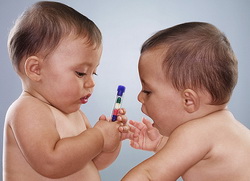In vitro fertilization treatment is a kind of assisted reproductive technology suited for couples who have various kinds of infertility problems. Aside from being very expensive, IVF treatment can also be a very stressful experience especially for couples who have gone through a lot of different fertility treatments.

IVF Treatment Options
There are various IVF treatment options available that every couple can choose from. They are;
Natural Cycle IVF
From the word natural, this means that no fertility drugs are used in this type of treatment. The one egg that is released will be collected during a woman's normal monthly ovulation cycle. For women who are unable to take fertility a drug, natural cycle IVF is their best choice.
Mild Stimulation IVF
With mild stimulation, the woman will be given just a little dose of stimulating or fertility drugs.
In Vitro Maturation (IVM)
With In Vitro Maturation, the eggs are immediately collected after the release of eggs from the ovary and placed in an incubator. They will continue their process of maturing inside the incubator. IVM is recommended for women suspected to have ovarian hyper stimulation syndrome (OHSS) and polycystic ovarian syndrome (PCOS).
Embryo Transfer
After a successful fertilization and embryo culture, the embryos would be transferred back to the uterus for implantation. Depending on the situation, some would transfer up to three embryos, thus increasing the chances for a successful implantation. Probability of getting multiple births is also present.
Blastocyst Transfer
After fertilization, the embryo is given five to six days to fully develop until it reaches its blastocyst stage. Most of the fertility clinics nowadays offer blastocyst transfer because at this stage, it is easier to identify the healthiest embryo and so increasing the chances of getting pregnant.
Assisted Hatching
Before the embryo is transferred back to the uterus, another method that can be used is the assisted hatching. Before an embryo attaches to the uterus wall, the embryo breaks out of its outer layer. With assisted hatching, before the embryo is transferred, doctors thin out the outer layers of the embryo or make a hole to increase the chances of the embryo's implantation. But according to the National Institute for Health and Clinical Excellence, assisted hatching has not yet proven that it actually increases the chances of implantation. Further studies are still ongoing with regards to this method and the consequences it can bring to the baby.
Risks of IVF Treatment
IVF is a very complicated procedure and involves a lot of risks. Taking fertility drugs can cause the woman to develop ovarian hyper stimulation syndrome. Taking a big dose of fertility drugs can irritate the ovaries which results to swelling up several times of its normal size. In some cases, bleeding may also occur caused by the needles used during egg retrieval. During the IVF treatment, doctors closely monitor the woman to avoid such risk from developing and for it to be given immediate treatment.
One cycle of an IVF treatment will take around four to six weeks and the experience would be like a roller coaster of emotions. But always keep in mind that one failed IVF doesn't imply that the next will fail as well. The probability to conceive is still the same as the first IVF procedure. Be sure you know your options and that you fully understand how the process is done.
